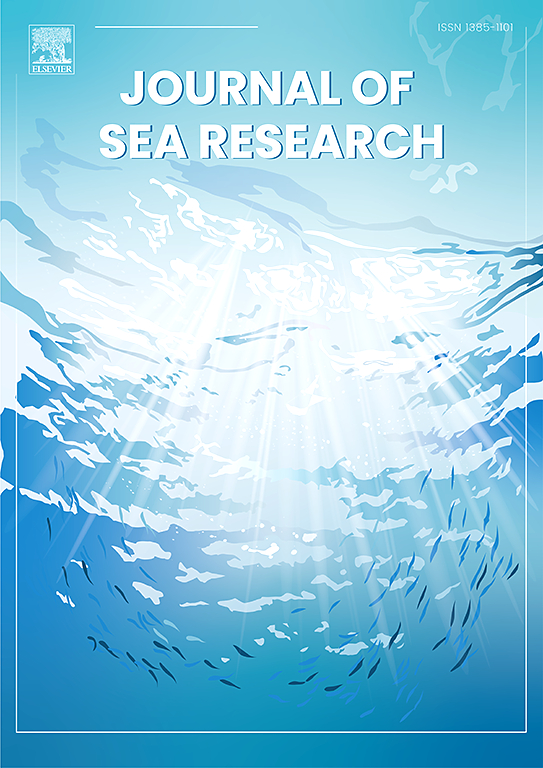Epibenthic communities' structure in St. Pierre Bank revealed by underwater video
IF 2.9
4区 地球科学
Q2 MARINE & FRESHWATER BIOLOGY
引用次数: 0
Abstract
Given the significant ecosystem services provided by benthic communities, monitoring their biodiversity enable to better understand how global changes would affect their structure in a context of biodiversity loss. Using underwater video transect, we characterize alpha and beta diversity of epibenthic communities, their structure and forcing factors in St. Pierre Bank; an area where marine benthos is still poorly documented. Video monitoring enables the detection of 74 different taxa belonging to eight phyla. Results highlighted three spatial entities of benthic assemblages distributed along a bathymetric gradient and primarily influenced by sedimentary types. In the southern and western area, rhodoliths beds substrate shelters the majority of echinoderms. The southern region was dominated by sea cucumber Cucumaria frondosa, whereas in the western area, brittle stars, and the green sea urchin Strongylocentrotus droebachiensis were dominant. Fishing activity was concentrated in the south, due to the presence of exploited sea cucumber. In contrast, the northern region featured patchy fine and soft substrates with a preponderance of giant scallop Placopecten magellanicus and sand dollar Echinarachnius parma. In addition to the contribution of environmental factors to the distribution of communities, this study highlights the complexity of several biotic interactions at the origin of these assemblages.
水下视频揭示的圣皮埃尔滩底栖生物群落结构
鉴于底栖生物群落提供的重要生态系统服务,监测其生物多样性有助于更好地了解在生物多样性丧失的背景下,全球变化将如何影响其结构。利用水下视频样带,研究了圣皮埃尔浅滩表层底栖生物群落的α和β多样性及其结构和影响因素;海洋底栖生物的记录仍然很少。视频监控可以检测属于8个门的74个不同的分类群。结果表明,底栖生物组合的空间实体主要受沉积类型的影响,并沿水深梯度分布。在南部和西部地区,rhodoliths床底物遮蔽了大多数棘皮动物。南部地区以海参为主,西部地区以海蛇尾和绿海胆为主。由于海参的存在,渔业活动主要集中在南部。北部以细软质斑块为主,以巨型扇贝(Placopecten magellanicus)和沙元(Echinarachnius parma)为主。除了环境因素对群落分布的贡献外,本研究还强调了这些组合起源时几种生物相互作用的复杂性。
本文章由计算机程序翻译,如有差异,请以英文原文为准。
求助全文
约1分钟内获得全文
求助全文
来源期刊

Journal of Sea Research
地学-海洋学
CiteScore
3.20
自引率
5.00%
发文量
86
审稿时长
6-12 weeks
期刊介绍:
The Journal of Sea Research is an international and multidisciplinary periodical on marine research, with an emphasis on the functioning of marine ecosystems in coastal and shelf seas, including intertidal, estuarine and brackish environments. As several subdisciplines add to this aim, manuscripts are welcome from the fields of marine biology, marine chemistry, marine sedimentology and physical oceanography, provided they add to the understanding of ecosystem processes.
 求助内容:
求助内容: 应助结果提醒方式:
应助结果提醒方式:


